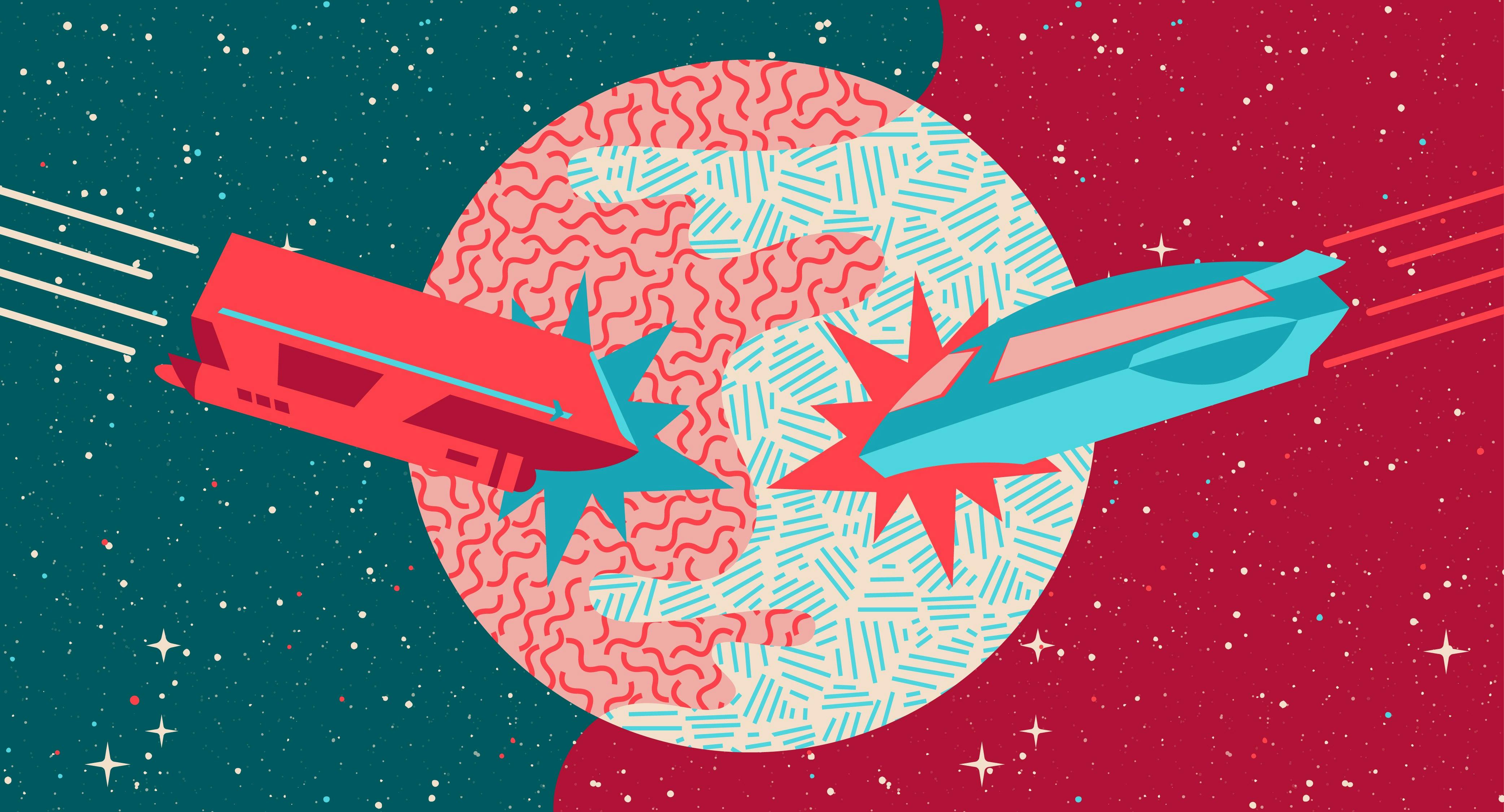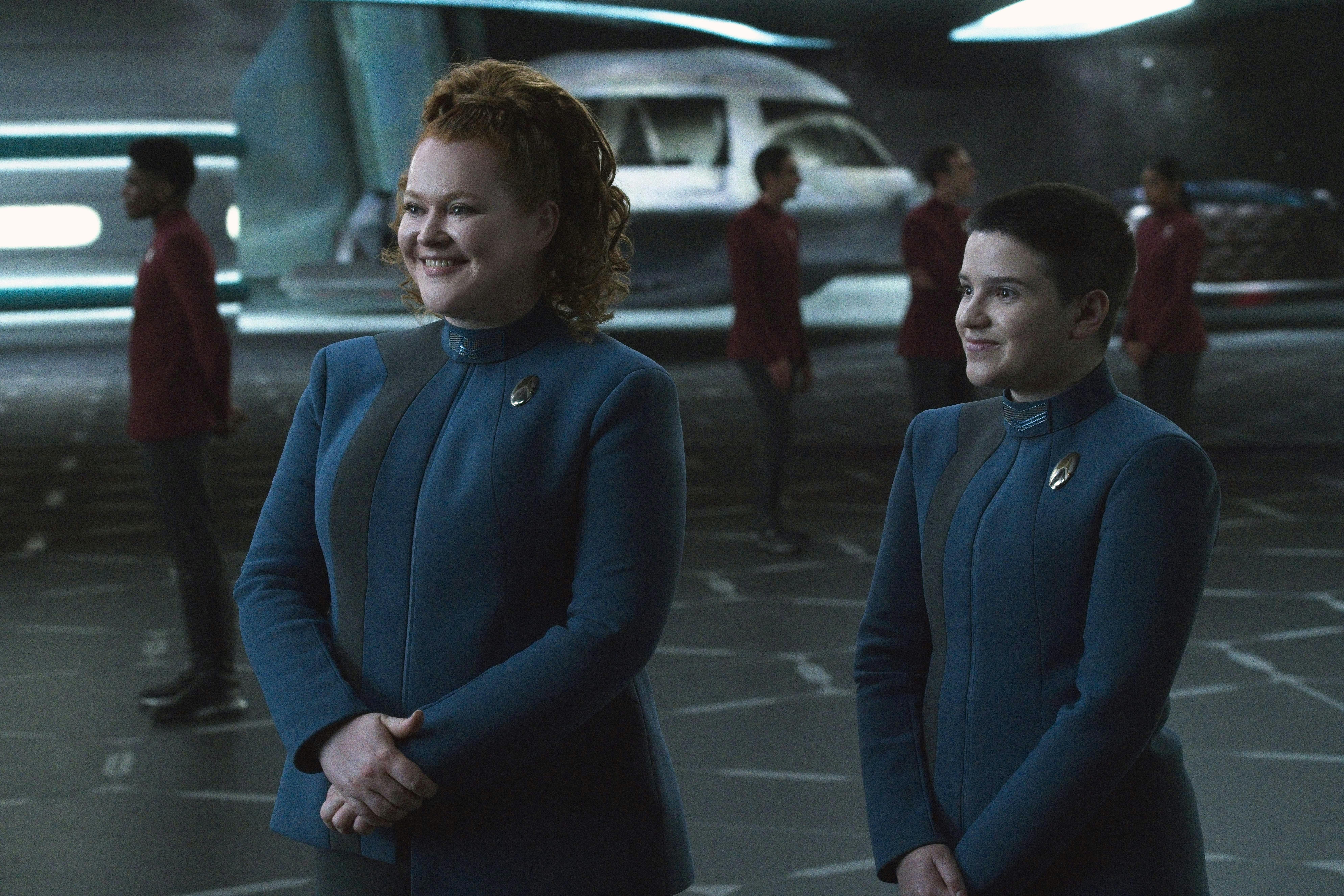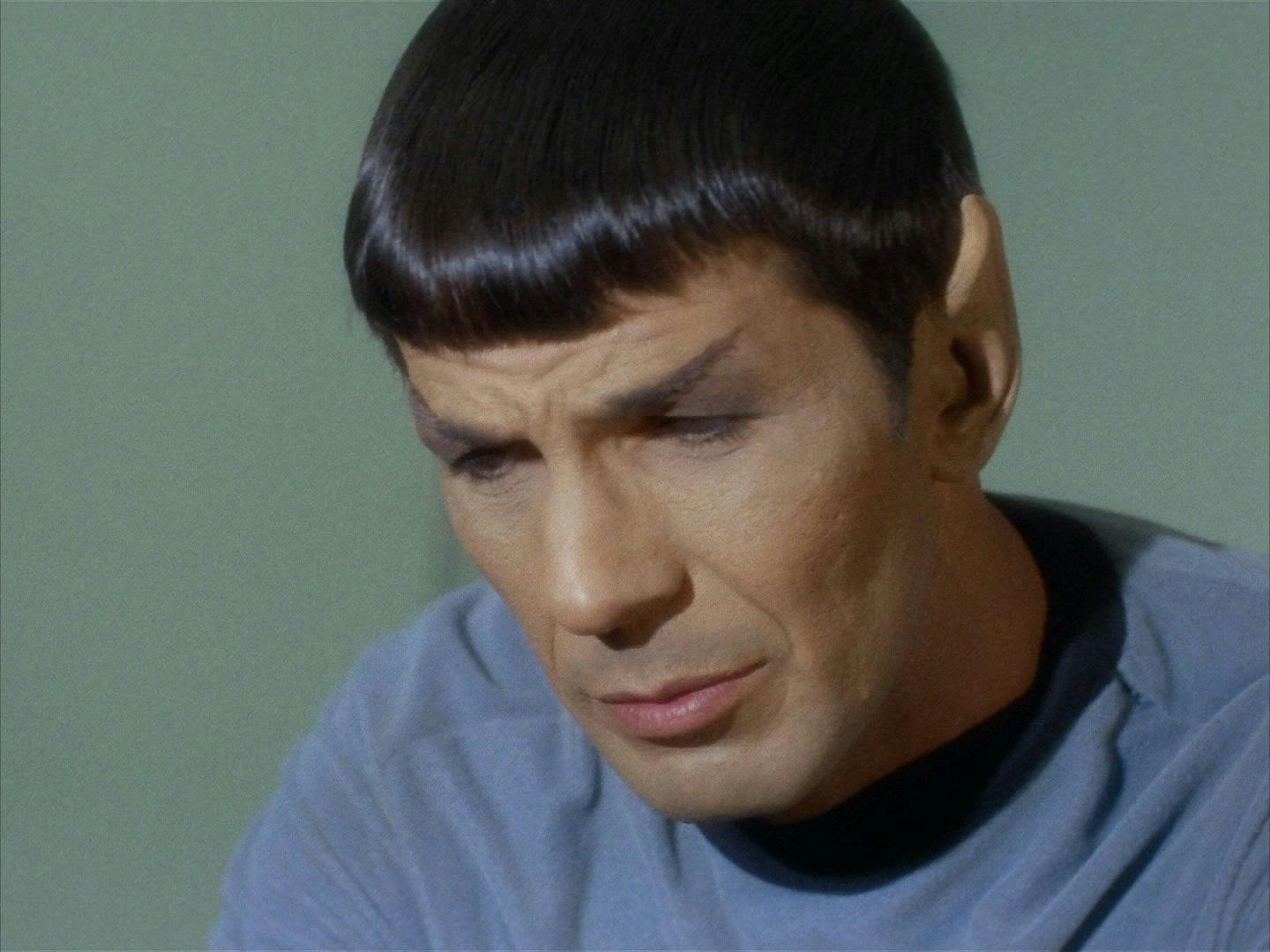Published Mar 28, 2022
How Discovery Honors a Classic TOS Adventure
Spock and Tilly have more in common than you realized

StarTrek.com
Even though Star Trek: Discovery is known for its heavily-serialized, season-long plot arcs and twisty mysteries, one season four episode delivered a positively old-school self-contained adventure. When Tilly and a group of new Starfleet cadets find themselves stranded on an inhospitable ice moon, they have to do everything they can to survive. Sound familiar?
As a part of Discovery Season 4, “All Is Possible,” is a stand-out moment for the series for two big reasons. First, the storyline it creates for Tilly sends a positive message about mental health within Starfleet, which hasn’t been explored much by the franchise until Discovery. Second, the framing of “All Is Possible” scans as a direct homage to a very similar, and beloved episode of The Original Series, “The Galileo Seven.” Here’s how Discovery took the basic premise of “The Galileo Seven” and made it feel brand new. Spoilers ahead.
For longtime fans of Star Trek, the similarities between “All Is Possible,” and “The Galileo Seven,” might seem obvious. After all, these aren’t the only two “trapped in a shuttlecraft” episodes in the franchise. From “Shuttlepod One” in Enterprise to “Final Mission” in The Next Generation, the notion of stranding crew members because of a shuttlecraft crash or malfunction is a proud Star Trek tradition. (Lower Decks even did this recently with the hilarious “Where Pleasant Fountains Lie.”) The reason why these kinds of episodes are so effective also plays into the notion of the Trek universe itself. Generally speaking, the starships of the Federation are gentle places, full of all sorts of fail-safes. But, shuttles are cruder, and it’s easier — and therefore more dramatic — for our heroes to be forced to face the unknown when the Enterprise, the Cerritos, or the Discovery can’t back them up.

StarTrek.com
So, we all agree shuttle crash episodes are exciting, and generally, we can agree as to why they’re exciting. But, it’s very possible we wouldn't have an excellent episode like “All Is Possible” without “The Galileo Seven” coming first. For all of Star Trek, “The Galileo Seven '' set the blueprint for how this type of story can be done.
In both “All Is Possible” and “The Galileo Seven,” the logistical set-up is similar; a small crew of Starfleet folks is assigned a routine mission, in which nothing should go wrong. Which, of course, means everything goes wrong. In “The Galileo Seven,” Spock and the crew of the shuttlecraft Galileo are hit with radiation near a quasar, which forces them to crash land on Taurus II. Similarly, in “All is Possible,” Tilly takes a group of young Starfleet cadets out on a survey mission to the planet Geryon, but, a gamma-ray burst throws them off course and onto the surface of Kokytos, an ice moon categorized as “Class L,” decidedly not the warm and fuzzy “Class M” planet everyone would have preferred.
In both episodes, a character who is not normally in command is forced to assume command of a small crew under less-than-ideal circumstances. In The Original Series, “The Galileo Seven '' was notable because it was one of the first Spock-centric episodes in which Spock was making command decisions without the input of Kirk. And while we’ve seen Tilly make command decisions before in Discovery, we haven’t seen it happen in an isolated environment. Both episodes are jarring because we’re not only worried about the danger of the inhospitable planet, or the fact that the shuttle is basically lost in space; instead, the stakes are made higher because a character we like very much is suddenly put in a situation with an astounding amount of pressure, faced with a crew who may or may not trust them.

StarTrek.com
We might not quickly associate Spock with Tilly, but what they go through in these two episodes is very similar. In the 1974 novelization of “The Galileo Seven,” written by James Blish, we get some brief insight into how afraid Spock is during this mission. As Blish writes: “Now in his half-human agony, he took refuge behind a mask of stone. His first and last command.”
Spock’s desperation to prove himself a competent commander is interestingly not dissimilar from Tilly. Throughout Discovery, we’ve seen Tilly struggle with her ambition to become a Starfleet captain, which comes into contrast with her own happiness. And even though the characters couldn’t be more different, this makes Tilly a lot like Spock. She knows she has the ability to command, but by the end of “All Is Possible,” she recognizes it’s not what she actually wants.
Speaking to Smithsonian Magazine (and published in 2016), Nimoy revealed that he considered his work on “The Galileo Seven,” to be a “failure” because it was “very tough” to define Spock without the contrast of Kirk. Obviously, no Star Trek fan would agree with this, because clearly, Nimoy is amazing in “The Galileo Seven.” But, Nimoy’s self-criticism is perhaps, telling of how much times have changed. When “All Is Possible” aired, Mary Wiseman said that she loved the storyline of this episode, because it is a “story where she has to question herself in some way. And that leads to character growth.”
In essence, both episodes are parables about mental health, about how to be true to yourself even in the worst circumstances. Obviously, Mr. Spock’s emotional turmoil is the driving force of his character, but he's also not really supported in his emotional struggles by his crewmates. Or, to put it another way, Spock isn’t supported by his crewmates to the degree that the crew of Discovery supports each other. Bones pretty much rides Spock the entire time in “The Galileo Seven,” something you can’t imagine Culber doing to Tilly in Discovery. When members of Tilly’s crashed shuttle lash-out at her (or each other) they do so out of fear and lack of experience. Arguably, Bones is afraid, too, but some of his personal attacks on Spock in “The Galileo Seven,” now scan as a tad extreme.
The Best of Discovery's Sylvia Tilly
In 2021, Mary Wiseman pointed out that Star Trek: Discovery is “very mental health-focused,” and Tilly’s decision to step back from working on Discovery makes sense from the point of view of self-care. It’s entirely possible that Spock might have needed a break following the events of “The Galileo Seven,” too. But, from what we know of The Original Series, Spock would probably never take a break, even if it was killing him.
This is the power of “All Is Possible.” It reaches back and honors this classic (and delightful) TOS episode, but also throws the themes of that episode into a new light. Tilly is a totally different character than Spock, but she faced an almost identical problem. Both, through bravery, saved the day. But, the essential difference is poignant: Spock could barely acknowledge his anguish, to the point that it’s mostly relegated to a novelization! Meanwhile, Tilly is free to have her feelings, and for those feelings to not jeopardize her career in Starfleet. In Discovery, the needs of the one don’t have to be in conflict with the needs of the many, because now, more is possible.
Ryan Britt (he/him) is the author of the forthcoming non-fiction book Phasers On Stun! How the Making (and Remaking) of Star Trek Changed the World, out from Plume Books on May 31, 2022. His science fiction journalism and criticism appear regularly with Inverse, Den of Geek!, Vulture, and Star Trek.com. His other writing has been published with SyFy Wire, VICE, the New York Times, and elsewhere. Ryan is an editor at Fatherly and lives in Portland, ME with his wife and a daughter who adores tribbles.
Star Trek: Discovery currently streams exclusively on Paramount+ in the U.S. Internationally, the series is available on Paramount+ in Australia, Latin America and the Nordics, and on Pluto TV in Austria, France, Germany, Italy, Spain, Switzerland and the United Kingdom on the Pluto TV Sci-Fi channel. In Canada, it airs on Bell Media’s CTV Sci-Fi Channel and streams on Crave. Star Trek: Discovery is distributed by Paramount Global Distribution Group.

